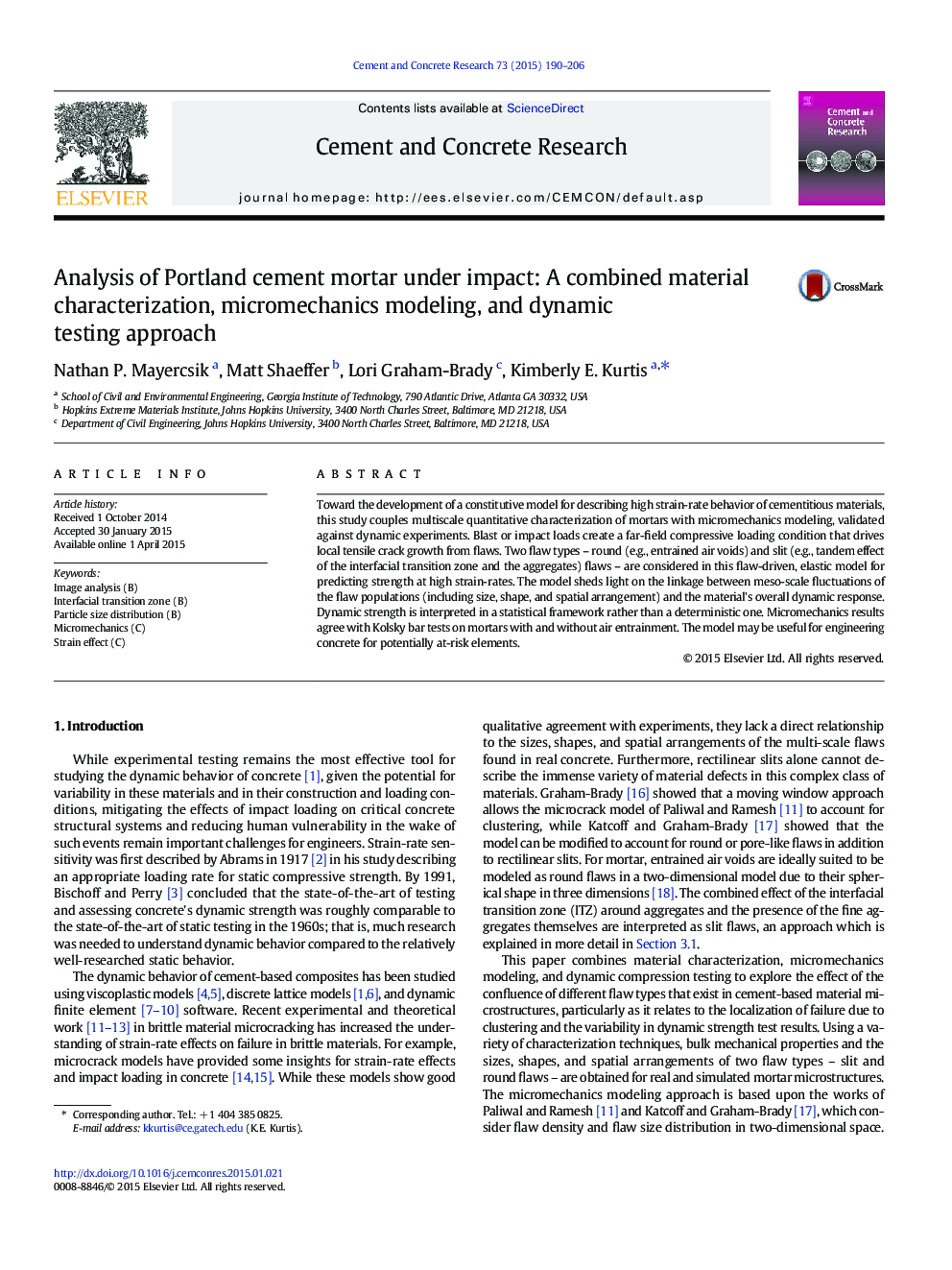| Article ID | Journal | Published Year | Pages | File Type |
|---|---|---|---|---|
| 1456144 | Cement and Concrete Research | 2015 | 17 Pages |
Toward the development of a constitutive model for describing high strain-rate behavior of cementitious materials, this study couples multiscale quantitative characterization of mortars with micromechanics modeling, validated against dynamic experiments. Blast or impact loads create a far-field compressive loading condition that drives local tensile crack growth from flaws. Two flaw types – round (e.g., entrained air voids) and slit (e.g., tandem effect of the interfacial transition zone and the aggregates) flaws – are considered in this flaw-driven, elastic model for predicting strength at high strain-rates. The model sheds light on the linkage between meso-scale fluctuations of the flaw populations (including size, shape, and spatial arrangement) and the material's overall dynamic response. Dynamic strength is interpreted in a statistical framework rather than a deterministic one. Micromechanics results agree with Kolsky bar tests on mortars with and without air entrainment. The model may be useful for engineering concrete for potentially at-risk elements.
